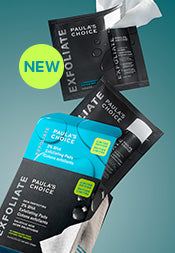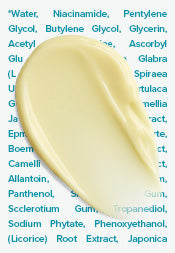Sun Protection Tips: How & When to Apply Sunscreen

Sun protection seems simple, right? Apply sunscreen to exposed skin before you go outside, and you’re done. But this tip isn’t that simple: The when, where, and how you apply sunscreen is important, but often confusing.
We’ve examined all the latest research and have definitive answers to your most burning sunscreen questions. Get ready to keep your skin protected and looking younger, longer!
Why sunscreen is so important
Nothing is as critical as using a sunscreen rated SPF 30 or greater daily to keep skin younger-looking, protected, and resilient. This is something Paula’s Choice Skincare has embraced with every sunscreen we've created. Your skin needs sunscreen if it is exposed to daylight, even indirectly (in the shade of a tree or through windows). When used as directed with other sun protection measures, sunscreen decreases the risk of skin cancer and early skin ageing caused by the sun.
When to apply sunscreen in your skincare routine
Most medical experts, regulatory boards, and scientists agree: Sunscreen is always the final step in your daytime skincare routine. This is exactly how sunscreens are tested to earn their SPF rating. Any skincare product you apply over sunscreen dilutes and reduces its effectiveness.
What about the products you apply before your sunscreen? Just follow your normal skincare routine (cleanser, toner, exfoliant, etc.) and consider adding an antioxidant serum. Research has shown that antioxidants help further shield skin from daily environmental stressors that slowly chip away at its youthful appearance.
Which goes first: sunscreen or moisturizer?
So, how to apply sunscreen and moisturizer? If you’re using sunscreen and a separate moisturizer, apply the moisturizer first, followed by the sunscreen as your final skincare step. But do you really need a moisturizer under your sunscreen? Probably not. Today’s best daytime moisturizers with SPF combine hydration and beneficial skincare ingredients, in addition to broad-spectrum sun protection. You shouldn’t need to apply both sunscreen and moisturizer if the formula you’ve chosen is suitable for your skin type and skin concerns.
When to apply sunscreen
Apply sunscreen 15 to 30 minutes before you go outside and be sure you let it absorb before you get dressed. If you get dressed immediately after applying sunscreen, it can rub off on your clothing and won’t help your skin much.
We repeat: You must apply sunscreen before you go outside. Waiting until you’re outdoors exposes your skin to an incredible amount of damage. Research has shown that sun damage begins the first minute your unprotected skin sees daylight—not sunlight, but daylight!
How much sunscreen to apply
The common direction is to apply sunscreen “liberally,” but what does “liberal application” really mean? You’ll find measurement recommendations (one to two teaspoons for your face, a shot glass full for your body), but they don’t really make sense. Why? Because not everyone has the same size body or face and not everyone has the same amount of skin exposed to daylight. Compliance is also an issue—studies have shown that people tend to under apply sunscreen by 20-50% of the recommended value.
How much sunscreen to put on the face?
To be sure you’re applying enough sunscreen on your face, ensure that you:
- Spread a visible layer over the areas of your skin that will be exposed to daylight, including the ears, neck, etc.
- Massage this layer into the skin.
- If you’re planning a long day outside, a tip is to apply another slightly thinner layer to prevent sunburns.
The same sun protection advice applies to the body.
When & how to reapply sunscreen over makeup
One of the more confusing issues about sunscreen use is seeing label instructions to reapply every two hours. This is about regular face or body sunscreens—not water-resistant sunscreens, which have their own timeline for reapplication. With water-resistant sunscreens, you must follow the specific reapplication instructions for adequate protection after getting wet or perspiring.
For daily use of regular sunscreen, the question is how can you reapply every two hours if you’re wearing makeup? Are you supposed to wash your face, reapply sunscreen, and then reapply your makeup only to do it all again in another two hours? That isn’t very practical or, as it turns out, necessary if you’re wearing a high enough SPF rated sunscreen and applying it liberally the first time.
The two-hour recommendation came about because the research made it clear most people were not applying sunscreen liberally. Therefore, regulators followed the logic that if a person applies sunscreen again two hours later, they’d be ensuring more adequate protection. BUT if you apply it liberally in the beginning, reapplication isn’t critical.
The fact is that the SPF number is a time rating of how long you can be in the sun without burning. If a product is rated SPF 30 or greater, that’s going to be a lot longer than two hours for most people.
Plus, the issue of reapplication is about being outside in direct light without seeking shade. If you apply sunscreen in the morning and spend most of your day inside (without your skin getting wet or perspiring heavily) and if when outside, you’re seeking shade, wearing sunglasses and hats with brims, your sunscreen should still be effective by the end of the day. This is because sunscreen actively breaks down in response to direct exposure to daylight, not just from the passage of time.
We know, it’s complicated. As wonderful as the sun feels and despite the good moods it inspires, we can’t change the fact that it is a powerful carcinogen that prematurely and progressively ages the skin, causing wrinkles, pigmentation, and loss of firmness. Figuring all this out isn’t easy, but for the sake of your skin, at the very least:
- Apply sunscreen liberally to all exposed skin 365 days a year.
- On long days outside wear higher SPF-rated products.
- You can also layer sunscreen products, especially for the face, by wearing sunblock and a foundation with SPF and touch up with an SPF-rated powder.
- You must wear water-resistant sunscreens when swimming or perspiring and follow the reapplication directions exactly.
- Reapply sunscreen to your hands after washing (keeps them looking young too).
- Seek shade, wear UV-rated sunglasses and wide-brimmed hats.
- Wear sun-protective clothing whenever possible (it’s less expensive than applying sunscreen liberally all over an entire body in the long run).
Do I need to wear sunscreen indoors?
Yes, you should wear sunscreen indoors. The UVA rays of daylight that are present year-round come through windows. If you think that just walking to your car and then into a store or office won’t damage your skin, think again. Those few minutes of UV light exposure add up over the years, causing your skin to age faster than you want.
Applying makeup over sunscreen
We’re often asked if applying foundation that doesn’t contain sunscreen over the sunscreen you’ve just applied will diminish the sunscreen’s ability to protect skin. It won’t if you follow these guidelines:
- Wait 3–5 minutes for the sunscreen to set before applying foundation.
- Apply the foundation in smooth, downward motions, no rubbing back and forth.
- Do not use excess pressure or over-blend.
- It's even better when your foundation, BB cream, or tinted moisturizer contains sunscreen too— we love to layer sunscreen!
What about relying on foundation with sunscreen on its own? That’s a fine way to get protection for your face if you apply liberally. If you don’t like that much coverage or how a liberal foundation application feels, then go back to liberally applying sunscreen prior to makeup.
A note on powders with sunscreen: Don’t rely on pressed or loose powders with sunscreen as your only sun protection. Getting to the point of achieving the stated amount of sun protection requires a lot of powder. Powders with sunscreen are a great way to touch up your makeup during the day and apply more protection at the same time.
Shop for skincare products online such as face products and body products to protect yourself against sunburns today.
References for this information
Canadian Medical Association Journal, December 2020, pages E1805
Cosmetics, July 2019, pages 1-13
Journal of Cutaneous Medicine and Surgery, July 2019, pages 1-13
Science, February 2015, pages 842-847
Photodermatology, Photoimmunology, and Photomedicine, April-June 2014, pages 96-101
Annals of Internal Medicine, June 2013, pages 781-790
Cutis, December 2012, pages 321-326
Clinical Experimental Dermatology, December 2012, pages 904-908
Journal of the American Academy of Dermatology, February 2010, pages 218-222
British Journal of Dermatology, February 2010, pages 415-419
Photochemistry and Photobiology, April 2003, pages 453-457
Journal of the American Academy of Dermatology, December 2001, pages 882–885
Recommended Products
RESIST SUPER-LIGHT Super-Light Daily Wrinkle Defense SPF 30











